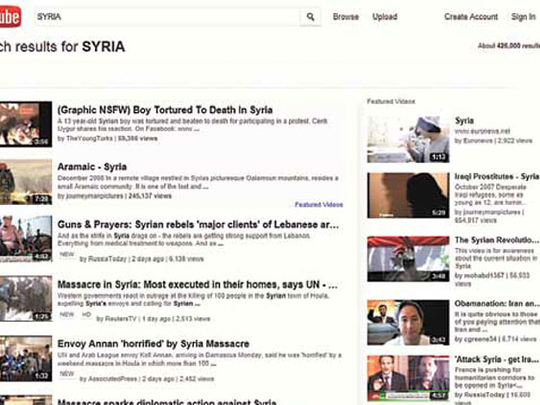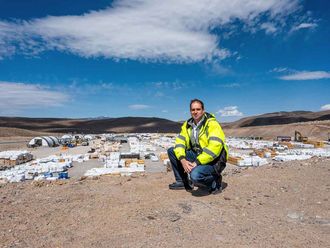
Dubai: Whether it is because of the “Arab Spring” and its accompanying changes or not, the popularity of videos posted on the internet is rapidly growing in the Middle East region. Yet, the issue of authenticity of posted videos continues to be a nagging question.
Some videos that were posted as events taking place in certain areas. But shortly afterwards, it was found out that they were few years old images of incidents happened in other places.
The number of videos uploaded online in the Middle East and North Africa has hit 160 million a day, while views have grown by 120 per cent in the last six months, officials at Youtube, a service provided by the global search engine of Google. With such massive number of posted videos every hour world-wide, monitoring and verification become almost impossible.
“We have a tool to verify authenticity from a copyright perspective,” said Matthew Glotzbach, a Managing Director at YouTube, which was acquired by Google in 2006. His responsibilities include strategy, development and management of YouTube’s business and product direction in Europe, Middle East and Africa region (EMEA).
To that end, “we have created a Copyright Verification Tool that assists copyright owners in searching for material that they believe to be infringing, and provides YouTube with information reasonably sufficient to permit us to locate that material. This tool is designed especially for copyright-holding companies to issue multiple removal requests,” Glotzbach explained in a statement to Gulf News.
Apart from copyright issue, checking the accuracy of videos is a real challenge. During a media conference, an executive in one of the Arab Satellite Channels said that after showing a clip posted on YouTube as images taking place in Syria, it was found out that it was few years old and was shot in Iraq. The clip was immediately withdrawn from the website of the channel.
However, YouTube has introduced “Community Guidelines” as a tool to help viewers raise an alarm in case of clips that infringe on privacy or violate its guidelines.
“We’re not asking for the kind of respect reserved for nuns, the elderly and brain surgeons. We mean don’t abuse the site. Every cool new community feature on YouTube involves a certain level of trust. We trust you to be responsible and millions of users respect that trust, so please be one of them,” reads the first paragraph in the guidelines section.
Videos that contain pornography, animal abuse, drug abuse, bomb making, violence, threats, harassment and humiliation or attacking others are among the clips that are not allowed.
Viewers, explained Google officials, are asked to monitor and flag any clip that they deem violating the ruled.
“60 hours of video are uploaded every minute to YouTube, so we count on our community members, who are watching the site 24 hours a day, 7 days a week, to know the Community Guidelines and to flag content they believe violates the rules,” said Glotzbach.
“We receive thousands of flags every day. Each flagged video is quickly reviewed, and if we find that a video does violate the rules, we remove it (usually in less than an hour) and communicate with the person who uploaded the offending content. We take these violations seriously, and multiple infractions can result in a user’s suspension or permanent removal from YouTube,” he added.
In some cases, government bodies request the blocking and removal of certain content. Google, in such incidents, documents requests and shares them with the public.
“We’ve created Transparency Report to show the number of government inquiries for information about users and requests to remove content from our services. We hope this step toward greater transparency will help in ongoing discussions about the appropriate scope and authority of government requests,” Glotzbach said.
The Arab region, meanwhile, is among the rapidly growing regions for YouTube. It is estimated that one hour of video is uploaded in the Middle East and North Africa (MENA) region every minute.
A study by Cisco Visual Networking Index predicated that 90 percent of internet traffic in the world, including the Arab region, will be videos by 2015.
Asked whether the telecommunication companies are capable of handling the expected massive video traffic, Glotzbach said he can’t speak on their behalf.
Yet, he added, “we are seeing the region is now becoming home to many 4G mobile networks, which can support massive video traffic.












